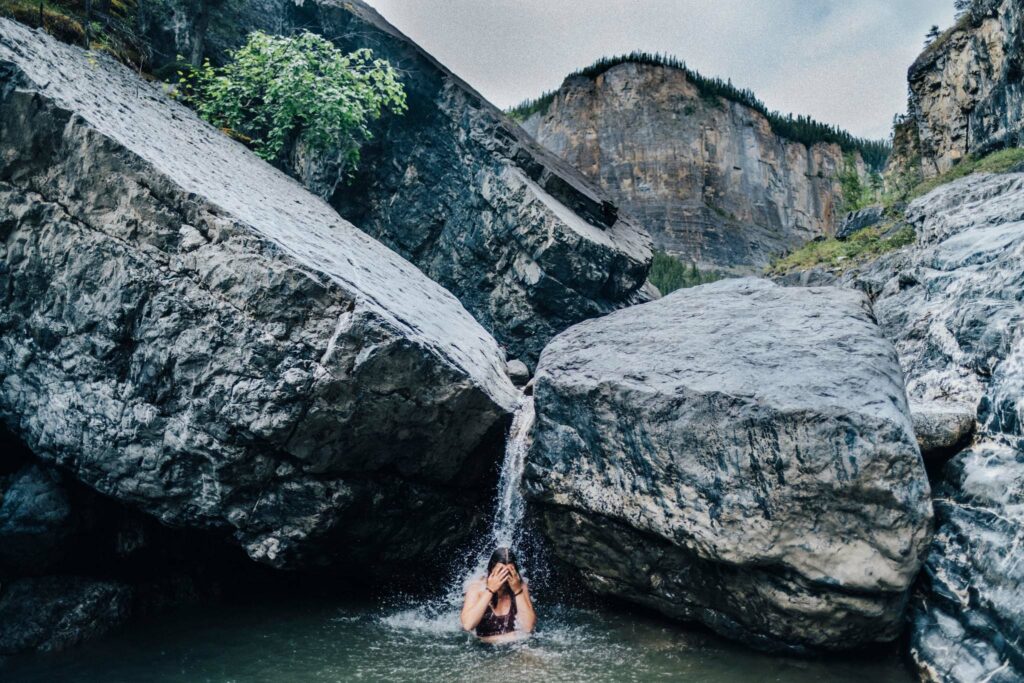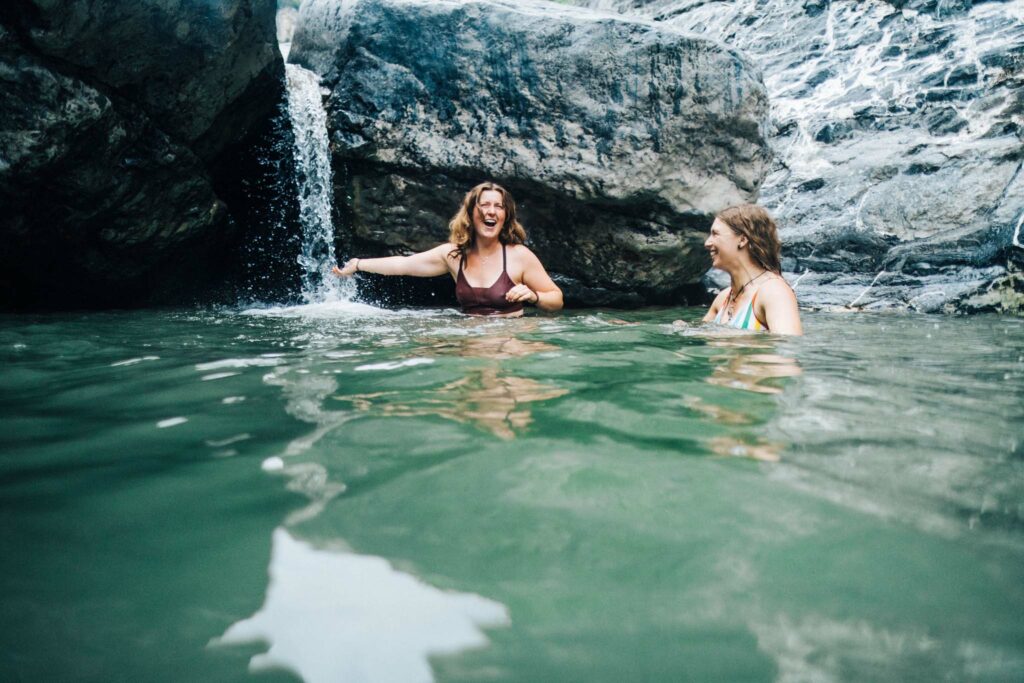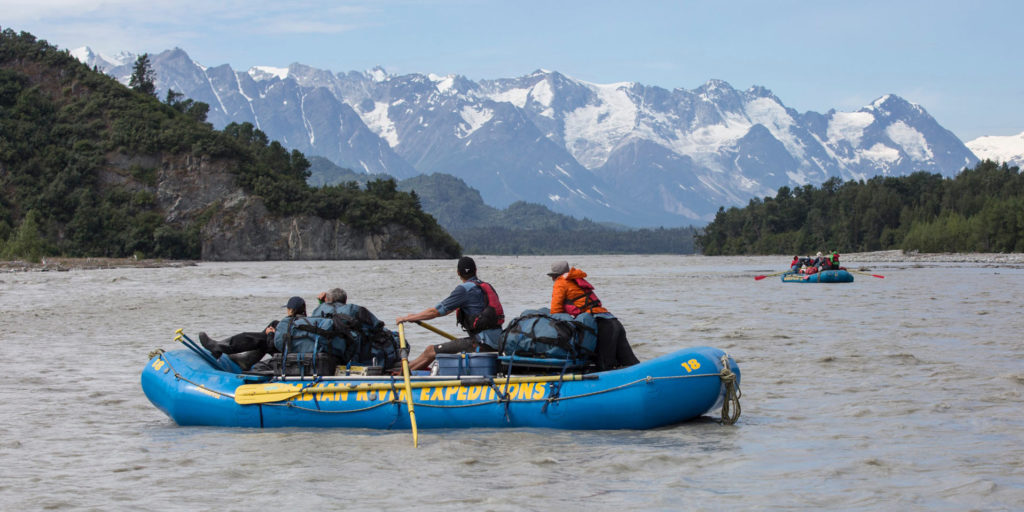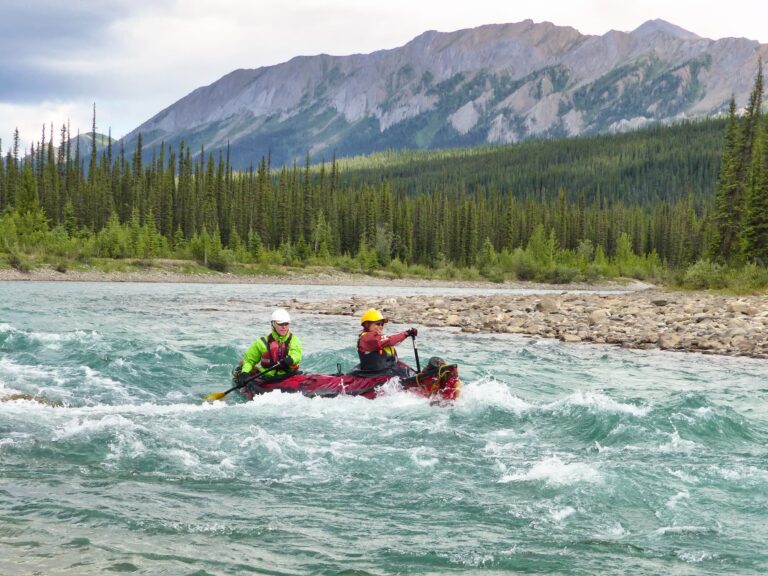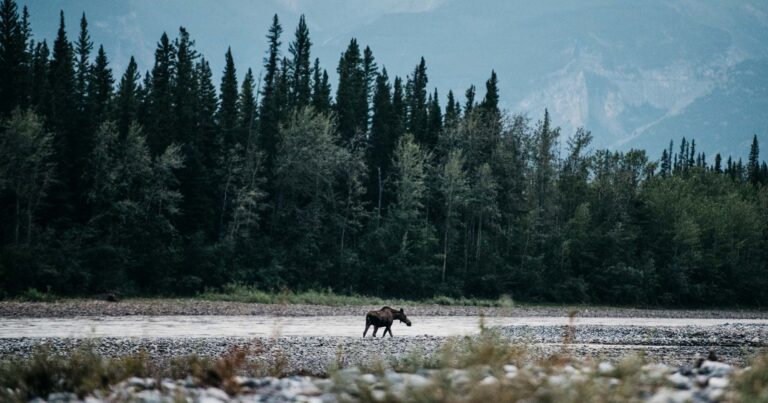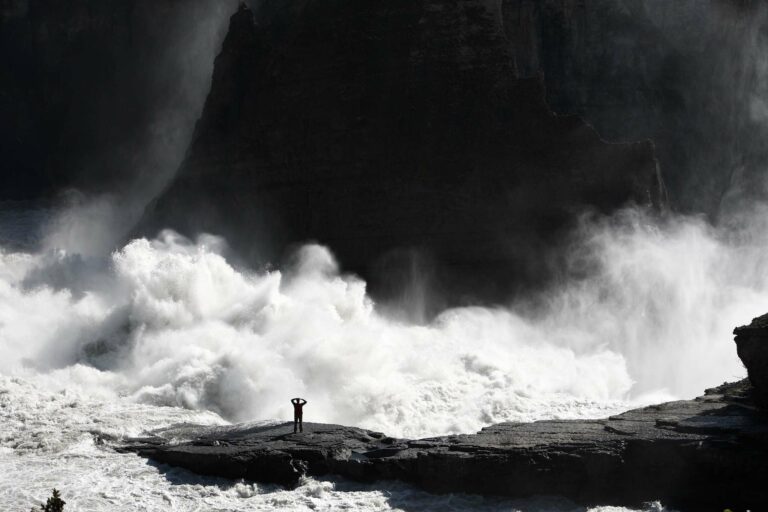Standing at the edge of Nailicho (Virginia Falls) on the Naha Dehe (South Nahanni River), you can’t help but be in awe of the breathtaking wilderness around you.
Part of what makes the Nahanni River such a world class paddling destination is the combination of its dramatic geology and rewarding yet accessible paddling. It is an antecedent river; more than 200 million years ago, its course was set as it flowed across the region’s limestone, sandstone and shale. As it flowed, the rocks were slowly forced upwards. This rate of life was matched by the rate of erosion by the river, creating the spellbinding canyons as we know them today.
This section of the river escaped the grinding effect of glaciation throughout the past ice ages, allowing the fluidity of water and wind to work their magic in carving the delicate stone walls. The resulting landscape makes it easy to understand why the Nahanni is Canada’s most revered river – a natural masterpiece which awes and inspires anyone who travels there.

Stood at the base of Nailicho, the power of the Nahanni River is immediately evident in the spray and colossal rock formations which tower above you – a dramatic setting to begin your journey of a lifetime.
At the beginning of our journey, we travel through cataracts carved into the vibrant limestone. This six kilometers (4 miles) of canyon was carved as the Falls worked their way upstream, a of erosion is seen in many river canyons.
Fourth Canyon, the first of the four canyons we travel through, stands 150 metres (450 feet) above the river. It is an especially beautiful part of the river as its rock walls have a painted appearance – a testament to nature’s artistry found here in the North.

As we travel through Third, Second and First Canyons, we see first hand the variety of rock types on the Nahanni and the resulting geo- and biodiversity.
Third Canyon is composed of soft limestone, slate and sandstone and has a broader V shape than any of the other canyons. It stands over 500 metres (1640 feet) high in places and is what is known as a colluvial valley – gently sloping sides with accumulations of loose sediment.
At The Gate – the site of the famous Pulpit Rock – we see the first example of the unique geological phenomenon called the cut-off meander. If you can envision a classic ox-bow on the prairies the cutoff meander looks the same when viewed from above. At some point, the Nahanni found a shortcut through the Gate. Aided by the freeze-thaw cycle this channel grew, likely topped by a natural bridge until eventually it collapsed, leaving our present day vista.

Second Canyon appears suddenly as we come around “Big Bend.” While it is not the longest, its walls are some of the tallest. Home to one of the most challenging hikes in Nahanni National Park, the Scow Creek drainage tops out 1300 metres (4265 feet) above the river. Rarely tackled, it provides incredible views of First and Second Canyons, the Tlogotcho Plateau, the Headless Range and Deadmen Valley. Second Canyon is also home to Dall Sheep and it is not an unusual sight to see small herds perched on riverside aeries.
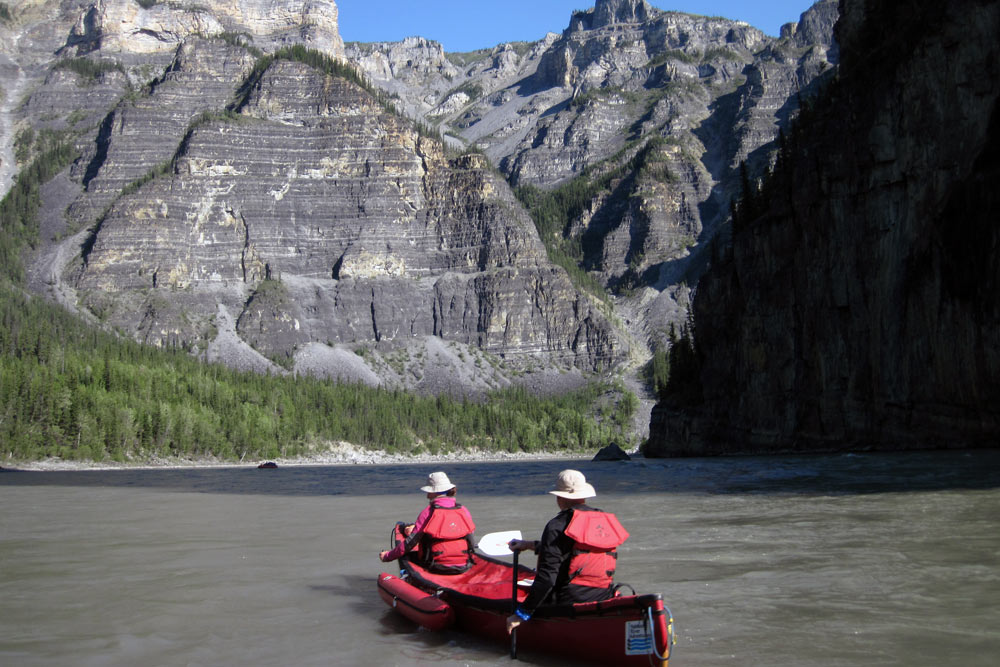
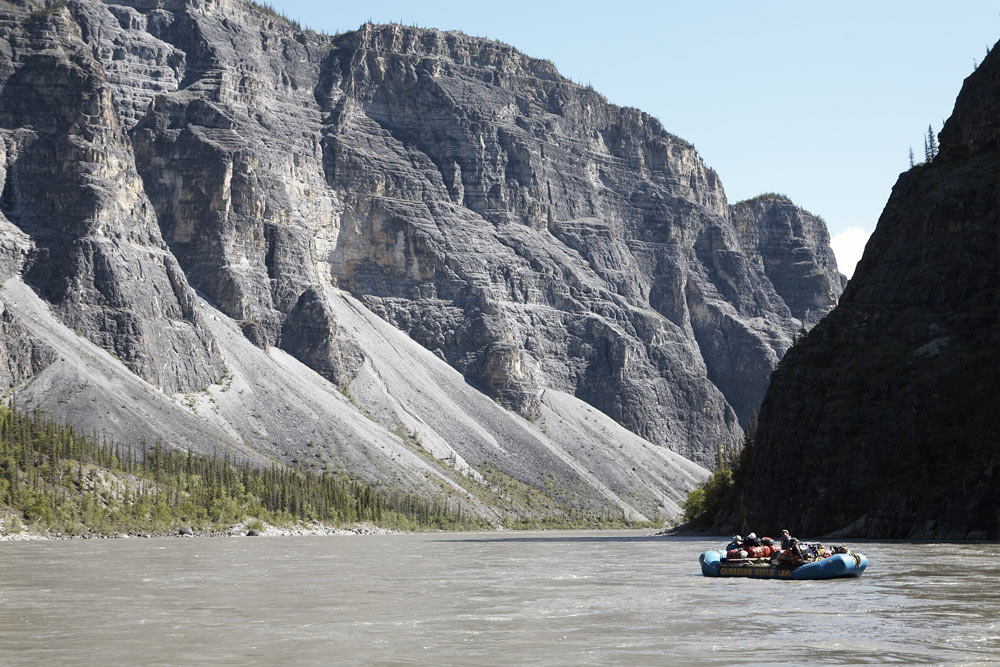
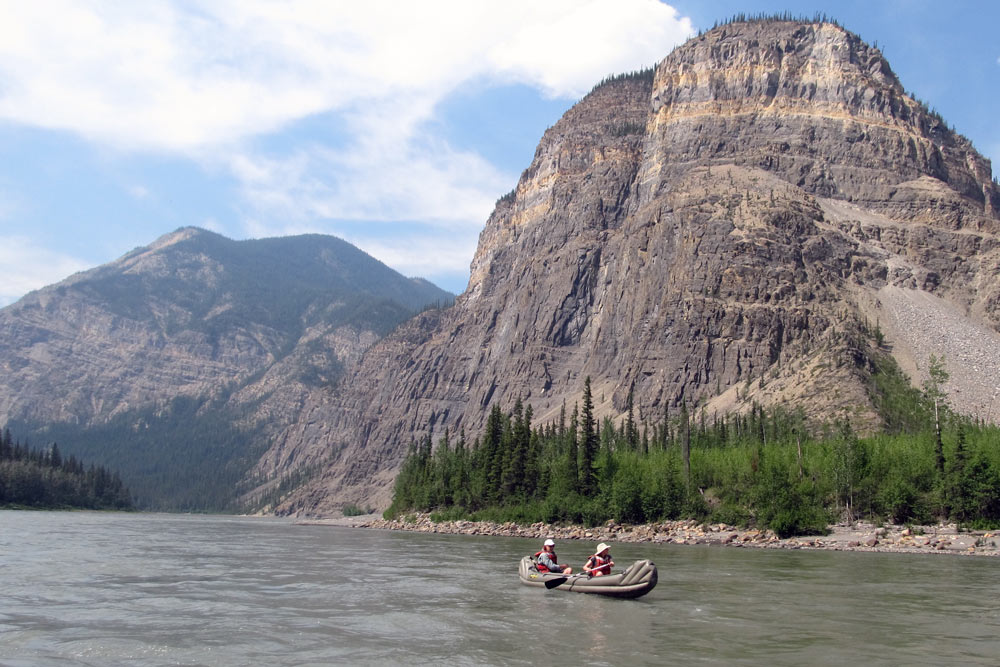



It is often said that the Nahanni saves the best for last; First Canyon is truly the jewel of the Canyon Kingdom. Composed of dolomite (a variety of hard limestone), its walls are incredibly sheer. Seemingly rising straight out of the river, they tower above the river at heights of over 1000 meters.
Guarded by sections of whitewater on both the upstream (George’s Riffle) and downstream end (Lafferty’s Riffle), a journey through First Canyon is an opportunity to contemplate our own insignificance. Following its ancient course, this geological marvel is not only an incredible example of antecedent rivers, with multiple cut-off meanders, but also provides an opportunity to view some of the incredible karst geology.
These are features created as water dissolves limestones; rain absorbs carbon dioxide from the atmosphere as it falls to Earth, creating a mild carbonic acid which dissolves the soft rock. This chemical erosion has resulted in the incredible organic curves of the canyon’s walls, sink holes on the Nahanni and Ram plateaus, and of course the Nahanni’s famous cave systems. While entrance to the caves is restricted we are able to view the cave entrances from the river as we approach the end.
No exploration of First Canyon is complete without exploring one of its side canyons! Dry Canyon and Lafferty’s Canyon are favourite hiking options offering access to two deep incisions into the Nahanni Plateau. Each step allows us to travel back in time with the geological history of the region laid out before us. It is not unusual to find fossilised sea life resting next to a granite glacial erratic from peaks hundreds of kilometers away. The bedrock canyons collect pools of water which are heated up as the limestone soaks up the sun’s thermal energy – creating a bucket list wild swimming spot!
-
- Nahanni, NWT, Canoe, Nahanni Park,
When the United Nations declared the Nahanni River the first UNESCO World Heritage Site in 1978, the spotlight began to shine on this incredible part of the world. Forty years later its wonders remain intact. It is a place so vast that we uncover a new perspective on its beauty with each journey we lead.
Whether it is the blush of wild flowers in a side canyon, a spray of ferns watered by Nailicho’s mist or watching a Dall Sheep ewe and lamb settle into the soft karst curve of First Canyon’s wall – there is still so much to discover and appreciate in the Nahanni’s Canyon Kingdom.

